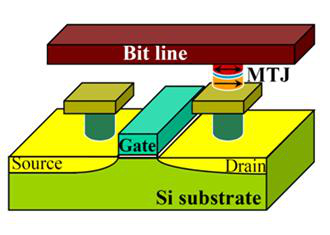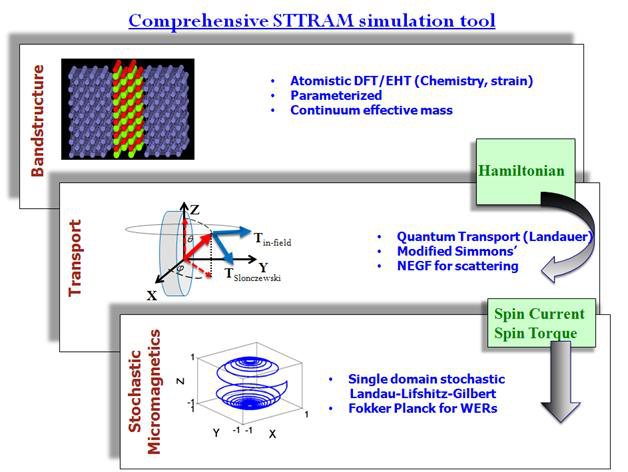Spin-Transfer Torque Ram
03 May 2014
Spin-Transfer Torque Ram:

A STT-RAM bit cell consists of a transistor and magnetic tunnel junction, where bit 1 or 0 is stored by manipulating the magnetization of a free layer. The ability to rotate the magnetization of a single domain free layer nanomagnet using spin polarized current leads to exciting possibilities for low-power embedded memory. Realizing those applications for real life usage requires addressing a complex and interlinked set of problems: material properties of the ferromagnet-oxide heterostructure spin transport, micromagnetics and thermal stochasticity of the free layer.

A particular challenge the STT-RAM industry faces is maintaining a high thermal stability while trying to switch within a given voltage pulse with an acceptably low error rate and energy cost. Our comprehensive and predictive STT-RAM modeling platform operates at different levels of complexities, ranging from a quasi-analytical model for the energy-delay-reliability tradeoffs to a fully atomistic, chemistry based multi-orbital model for predictive material design and optimization. Using this platform, we can identify suitable alloys for perpendicular, in-plane and partially perpendicular magnets and underscore the dual role of thermal fluctuations, both in hindering rotation and also in releasing spins from their stagnation points.